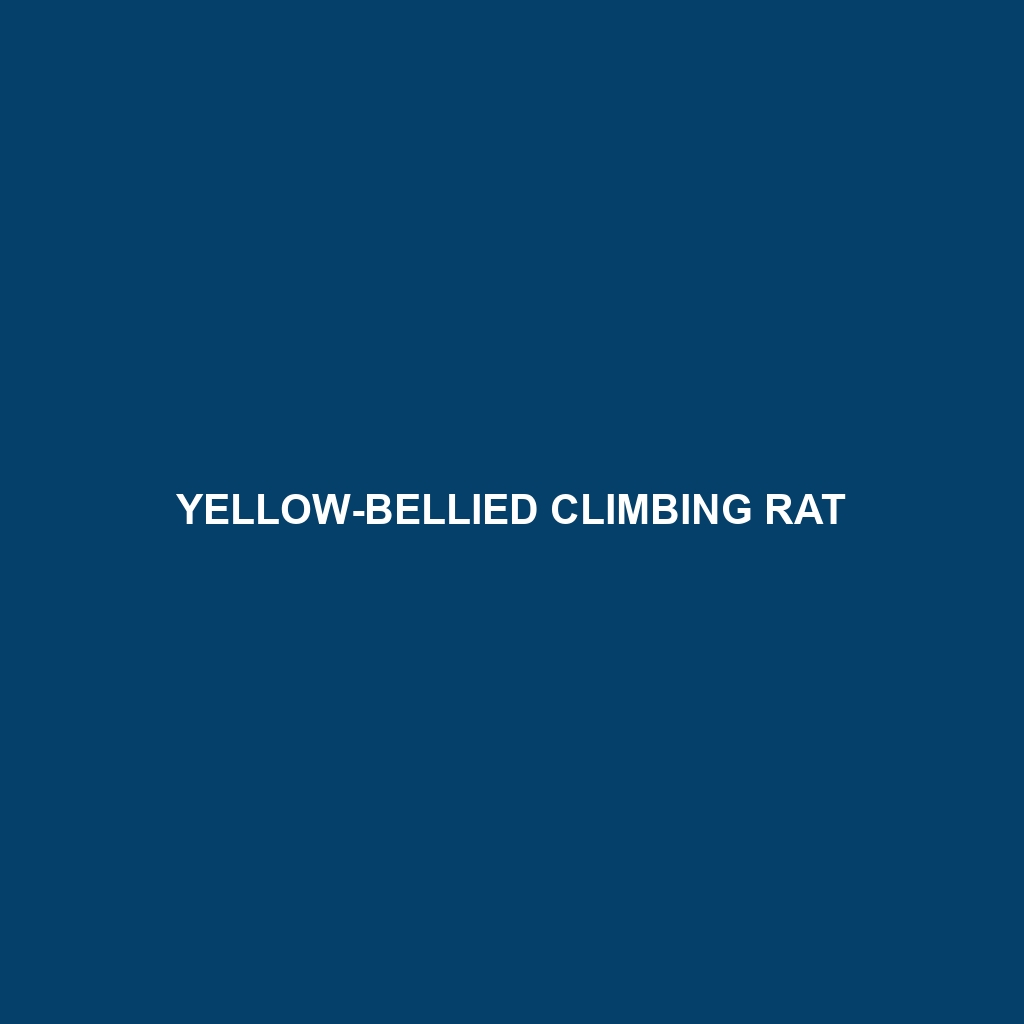Yellow-bellied Climbing Rat
Common Name: Yellow-bellied Climbing Rat
Scientific Name: Rhipidomys erythrogaster
Habitat
The Yellow-bellied Climbing Rat is primarily found in the rainforests and moist tropical regions of Central and South America. This rodent typically inhabits dense foliage, particularly in areas with abundant undergrowth and climbing vegetation. Geographic regions include parts of Colombia, Ecuador, and northern Peru, where humidity and temperature create a favorable environment for its survival.
Physical Characteristics
The Yellow-bellied Climbing Rat is known for its striking physical traits. Adults typically weigh between 150-250 grams and measure around 25-30 cm in body length, excluding their relatively long tails. Their fur is a mix of yellow and brown, with a distinctive yellowish belly, which provides camouflage among the foliage. Notable features include large, expressive eyes and long, flexible limbs, which facilitate their arboreal lifestyle.
Behavior
Yellow-bellied Climbing Rats are nocturnal and highly agile, making them adept climbers. They are often observed foraging for food at night, displaying a mix of solitary and social behaviors. These animals use vocalizations and scent markings to communicate with one another, particularly during mating rituals. Their ability to navigate complex tree branched environments is a key aspect of their survival.
Diet
The diet of the Yellow-bellied Climbing Rat primarily consists of fruits, nuts, seeds, and flowers. They play a crucial role in seed dispersal within their habitat, as they often transport seeds away from the parent plant. Occasionally, they will consume insects to supplement their diet, making them omnivorous foragers, adept at finding food sources in their arboreal setting.
Reproduction
The reproductive habits of the Yellow-bellied Climbing Rat include a breeding season that typically coincides with periods of abundant food availability. Females usually give birth to litters of 2-4 offspring after a gestation period of about 30-35 days. The young are born relatively helpless, depending on their mother for nourishment and protection until they are weaned at around four weeks of age.
Conservation Status
The Yellow-bellied Climbing Rat is currently listed as “Vulnerable” due to habitat loss driven by deforestation and agricultural expansion. Conservation efforts are critical to safeguard its natural environments and ensure the survival of this unique species in its native habitat.
Interesting Facts
1. The Yellow-bellied Climbing Rat is an excellent climber, capable of descending trees headfirst.
2. They have a highly developed sense of smell, which helps them locate food sources.
3. This species is known to exhibit playful behavior, often engaging in acrobatics while navigating the treetops.
Role in Ecosystem
As a seed disperser, the Yellow-bellied Climbing Rat plays a vital role in maintaining the ecological balance within its habitat. By aiding in the growth of new plants through seed distribution, this species supports the health of the forest ecosystem. Additionally, they serve as prey for various predators, contributing to the food web of their environment.
